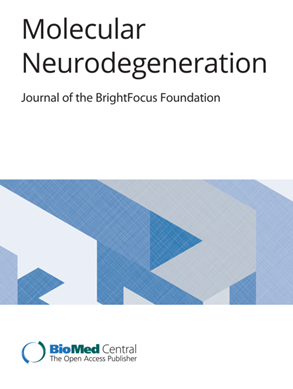The neuroimmune nexus: unraveling the role of the mtDNA-cGAS-STING signal pathway in Alzheimer’s disease
IF 17.5
1区 医学
Q1 NEUROSCIENCES
引用次数: 0
Abstract
The relationship between Alzheimer's disease (AD) and neuroimmunity has gradually begun to be unveiled. Emerging evidence indicates that cyclic GMP-AMP synthase (cGAS) acts as a cytosolic DNA sensor, recognizing cytosolic damage-associated molecular patterns (DAMPs), and inducing the innate immune response by activating stimulator of interferon genes (STING). Dysregulation of this pathway culminates in AD-related neuroinflammation and neurodegeneration. A substantial body of evidence indicates that mitochondria are involved in the critical pathogenic mechanisms of AD, whose damage leads to the release of mitochondrial DNA (mtDNA) into the extramitochondrial space. This leaked mtDNA serves as a DAMP, activating various pattern recognition receptors and immune defense networks in the brain, including the cGAS-STING pathway, ultimately leading to an imbalance in immune homeostasis. Therefore, modulation of the mtDNA-cGAS-STING pathway to restore neuroimmune homeostasis may offer promising prospects for improving AD treatment outcomes. In this review, we focus on the mechanisms of mtDNA release during stress and the activation of the cGAS-STING pathway. Additionally, we delve into the research progress on this pathway in AD, and further discuss the primary directions and potential hurdles in developing targeted therapeutic drugs, to gain a deeper understanding of the pathogenesis of AD and provide new approaches for its therapy.神经免疫联系:揭示mtDNA-cGAS-STING信号通路在阿尔茨海默病中的作用
阿尔茨海默病(Alzheimer's disease, AD)与神经免疫之间的关系已逐渐开始被揭示。新出现的证据表明,环GMP-AMP合成酶(cGAS)作为细胞质DNA传感器,识别细胞质损伤相关分子模式(DAMPs),并通过激活干扰素基因刺激因子(STING)诱导先天免疫反应。这一途径的失调最终导致ad相关的神经炎症和神经变性。大量证据表明,线粒体参与了AD的关键致病机制,其损伤导致线粒体DNA (mtDNA)释放到线粒体外空间。这种泄漏的mtDNA作为一种DAMP,激活大脑中的各种模式识别受体和免疫防御网络,包括cGAS-STING途径,最终导致免疫稳态失衡。因此,调节mtDNA-cGAS-STING通路以恢复神经免疫稳态可能为改善阿尔茨海默病的治疗结果提供了很好的前景。本文主要就应激条件下mtDNA的释放机制和cGAS-STING通路的激活进行综述。此外,我们将深入研究这一通路在AD中的研究进展,并进一步探讨靶向治疗药物开发的主要方向和潜在障碍,以期更深入地了解AD的发病机制,为AD的治疗提供新的途径。
本文章由计算机程序翻译,如有差异,请以英文原文为准。
求助全文
约1分钟内获得全文
求助全文
来源期刊

Molecular Neurodegeneration
医学-神经科学
CiteScore
23.00
自引率
4.60%
发文量
78
审稿时长
6-12 weeks
期刊介绍:
Molecular Neurodegeneration, an open-access, peer-reviewed journal, comprehensively covers neurodegeneration research at the molecular and cellular levels.
Neurodegenerative diseases, such as Alzheimer's, Parkinson's, Huntington's, and prion diseases, fall under its purview. These disorders, often linked to advanced aging and characterized by varying degrees of dementia, pose a significant public health concern with the growing aging population. Recent strides in understanding the molecular and cellular mechanisms of these neurodegenerative disorders offer valuable insights into their pathogenesis.
 求助内容:
求助内容: 应助结果提醒方式:
应助结果提醒方式:


